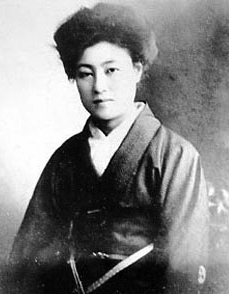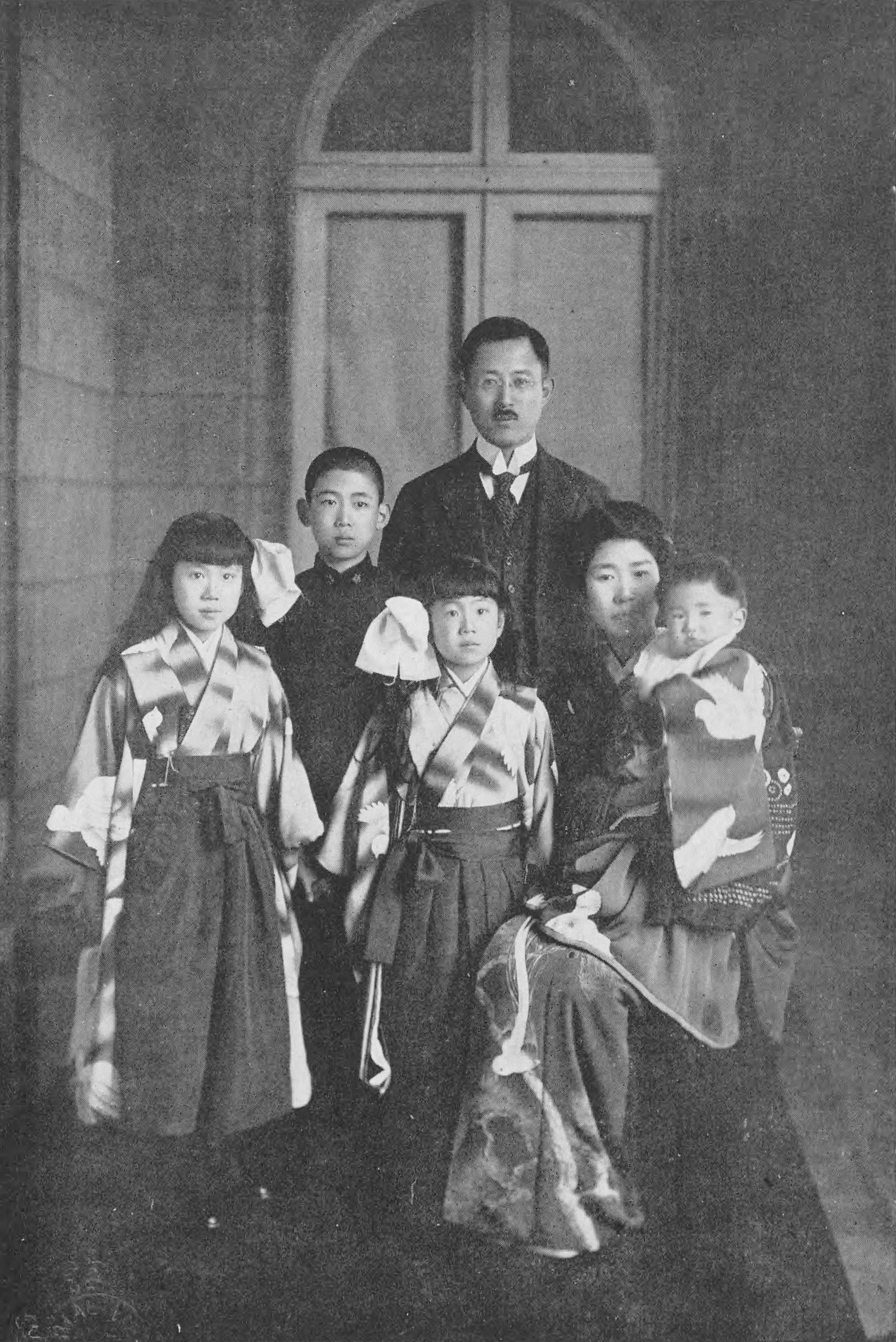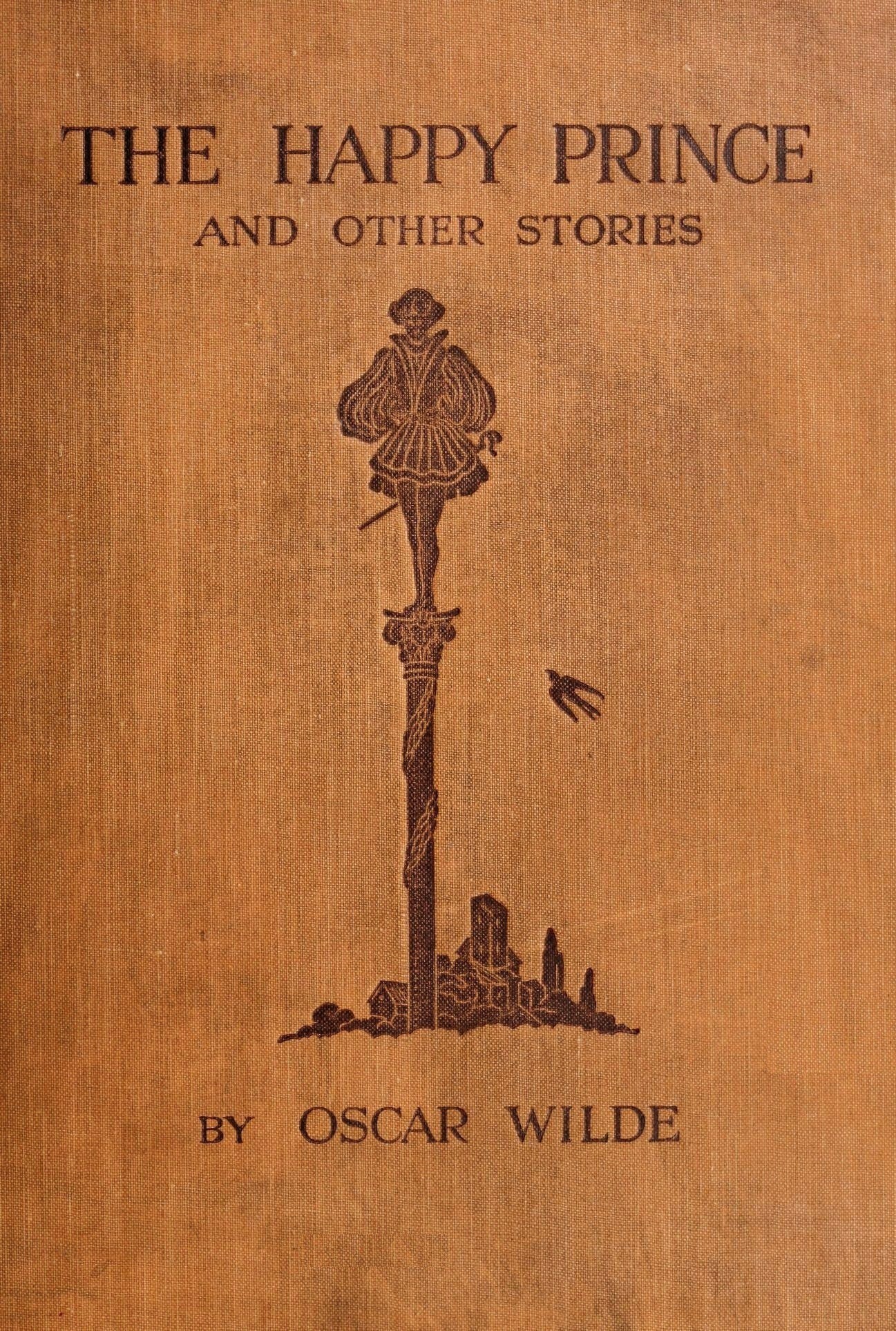This essay will cover the aspects of how 19th century Japanese import textiles to Western countries were used and repurposed, as well what their desirability tells us about how Japanese design was regarded and the image which these people held of Japan through the Western lense and consciousness. This follows the progression of how Kimono can be used in the West from the undress of the 1860s, adapting silk bolts in the 1870s to high fashion western daywear, to the 1880s aesthetic movement and 1890 wholesale adoption in the Victorian age to being used prominently by society hostesses as tea gowns by the Edwardian period, and the subsequent change in Japanese export culture which we see in extant textile collections of Japanese textile in Western dresses of the periods.
The ritual of 'taking tea' began as part of the aristocratic notion of 'calling' in the 1860's.[5] Tea-gowns were originally interior dresses worn by British women in the 1870s around the parlor room. The term originated in the United Kingdom under the height of the British Empire, which at this time amongst the upper class begun to romanticise British traditions and culture, such as the habits and rituals of tea drinking, which formerly had been only a luxury the rich could afford to do. Rituals, like money, helped establish the pecking order and class structures, which is why the rich loved all these random acts of flamboyant dinner parties and expensive habits where they flaunted their wealth. One of these rituals was the elaboration of the hostess who often drew the center of attention at these afternoon tea parties.[4] As at this time womens domain was the domestic sphere, their front parlors therefore became a stage for hostesses to have fun in.
The image of Japan as a cool hip and trendy country began only by the late Meiji period. Before this Japanese imports were regarded, particularly in the United States, as cheap, low-grade items rather like textiles today made in countries like Bangladesh. This can be seen when we compare how well Japanese local textiles were recieved in the West which set off a flurry of copycat motif sewing, but in how badly recieved Japanese export 'Yokohama robes' were taken up in the West.
Yokohama Robes (1875) MET Musuem
Beginning with the advent of Japonisme (coined in 1872) in France certainly, Japanese items began to become coveted, including textiles.[1] This was noted upon in Japan itself, which began curating exports for the western import markets. This in turn altered the perception of Japanese textiles which in the late 1870s were often high-grade exports to Western markets, by silk makers such as Shiino Shobei (1839-1900) from 1873. Japanese textiles suddenly became from this point on regarded as an extension of the exotic East, Japan particularly producing the artistic products of this Eastern bloc which often piggy-backed Japonaiserie with Chinoiserie. This expounded from artists such as Turdman (1834–1903) and the dresses worn by women like Frances Dawson/Leyland (1834–1910), lady of the Leyland family who were known for their adoration of Japanese art (see the Peacock Room) and as Art patrons. In Britain, the 'Japan cult' took off at this time, who equated Japanese art with classical Hellenic art. It was this favoured nation status (history pun) which made the loose form and Japanese art coalesce by 1875 in the popular Victorian conscious by the actions of the promotion of wealthy collectors such as the Leylands and the Ionides family in Britain who promoted artists such as Turdman (see Resource Page) and Thomas Jeckyll (1827-1881).

Portrait of Mrs. Frances
Leyland (1871–1874) The Frick Collection
Ellen Terry in Kimono (1874) Smallhythe Place
Misses Turner Court Dress (1874-1876) Kyoto Costume Institute
Early Day Gown
As you may have guessed, this was a more fashionable silhouette and association than the frumpy Yokohama Robe, with Japanese kimono being peiced apart and into day dresses by the likes of Misses Turner Court Dress Makers (active c.1870) in London, England, UK.[10] Other proponents of the style of loose clothing included Ellen Terry, who had been introduced to the Kimono by her Japanophile husband, Edward William Godwin (1833-1886) c1866-69.[13] By 1878, 5 o'clock tea became a principal part in an Englishwomans social calendar, as a break between lunch at 12AM and the evening meal at 8PM.[6] This schedule gave women the ability to build their social networks, and to show off how well their fashionable decorum and tastes were displayed both in the home and dress, which was particularly important in the dawning of the Aesthetic Movement. By this time, dress had become increasingly codified, which saw hostesses wearing dresses in an increasing state of undress, and guests who had 'called' at the home for tea to keep on gloves and hats which gave rise to finger sandwiches.[4] Female guests often attended multiple 'calls' in one day for afternoon tea, which birthed the tea-gown.
By 1880, British fashion saw the rise of the aesthetic and dress reform movements which preferred loose-fitted moderate styles of dress in womens garments, most likely from the influence of the Pre-Raphelites Artists depictions of their wives and lovers. Characteristically, the tea gown by now therefore had no cinched waist, was loose fitting and worn over other garments and used for when other people were visiting their homes or households to take afternoon tea at around 3-5PM. By this time, middle class women had begun introducing afternoon tea to their social calendars, which unlike invited upper class guests, was a more open affair where complete strangers were welcomed into the home for an hour or so to enjoy tea with the hostess.
Liberty Advertisement (1880) Liberty Billing Catalogue
Japanese Export Dressing Gowns (1880) Met Museum
With the rise of the aesthetic movement, Japonaiserie stirred the intellectual and the average consumer of the time equally. Japan was seen solely through an aesthetical lense. This made anything with an origin from Japan of interest to the average customer, rather than just to Japanophiles.[3] As such, rarer items such as the Kimono and silk bolts became desirable. They were sold from 1884 (from 1863 in a seperate Liberty warehouse) at Libertys Costume department store.[8] Among the Japonistas of the 19th century, many were domestic middle class sewers. This resulted in a proliferation of Japan themed books, objects and entertainment such as The Mikado which first premiered in London in 1885 led to the success of the adoption of a foreign garment by Western women in their daily routines as British and Western wear. Popular motifs included birds and flowers at this time. Certainly by 1887, it was key to incorporate artistic (Greek, Chinese and Japanese) influences into intimate tea parties by hostesses.[4] Designers such as the pioneering and founder of couture Charles Frederick Worth (1825-1895) brought asymmetry in dress pattern design, including Japanese motif such as the rising sun into high society acceptability in this decade.[14]

Three Little Maids from School (1885) Gilbert and Sullivan & Strobridge Litho. Co
Under the influence of men like Oscar Wilde, Frederick Sandys and the Leylands, Japanese art became an influential proponent and signifier of taste in high Victorian society, marrying the Japanese textile and art with the tea gown. By the 1890's, Kimono had become immensely popular and were extolled in womens magazines and society journals. They were particularly garnered for their versatility in being open and well ventilated garments as they were worn or draped by western women as tea-gowns.[9] Popular motifs included flowing water, birds (often plover and swallow), fans, flowers (blossoms, chrysanthemums, bamboo leaves, lilies), fruits (peaches) and fish.[2][4][14] Fanny Douglas in 1895 says that particularly large Japanese motifs on tea-gowns were becoming of high society ladies at the time.[7] Gowns were also made asymmetrically, a proponent learned by western designers during the Japan cult years, with other garments such as Obi used in the construction of Bustles for example. Gowns frequently allowed all of these to creep into modern daywear and Japanese textiles saw the light of day in western society.[4]

Kawakami Sadayakko (Before 1946 PD)
By the Edwardian period, Kimono as tea-gowns were all the rage. If you could not afford to buy a Kimono, then the common motifs were instead sewn onto western textiles instead.[2] By 1901, the tea-gown silhouette and style had begun to move into the public sphere.[4] Lingerie dresses and Kimono become recognised as a staple of the tea-party, and were worn regularly and seen as functioning in the realm of high fashion. These were often overlaid by Kimono, which may have been worn as dressing gowns, coats or wraps. They were commonly by now available from shops like Liberty in London or from Japanese companies such as Iida Takashimaya & Co (active 1831-1913).[10][11][12] Artists such as Kawakami Sadayakko (1871-1946) and the performance of the Darling of the Gods in 1903 in London also promoted Japanese Kimono. The House of Babini in France also became famous from selling cultural appropriation from 1905 on.[14] Due to Japans rising status as the only Asian great power equal to Great Britain, the Statesians, Russia and France between its victory over Russia in 1905 and as a victor in WWI, it became acceptable for Westerners to buy, sell and wear Japanese textiles which by now had a reputation for their durability, hardiness, beauty, culture and refinement which was a world away from the expectations of westerners of the flimsy quality of Japanese silk and the 'barbarity' of minimal tailoring westerners presumed of Kimono in the 1860s.[4][10]
In conclusion therefore we see how the Kimono and the Tea gown became close allies in the Victorian and Edwardian womans wardrobe. In the evolution of this merger, from 1860-1870 this saw the rise of silk textile export and incorporation into the western wardrobe through the art patronage of the Ionides and Leyland families who promoted Japanese art in British society. By 1880 with the rise of the aesthetic movement and wider acceptance of brighter colours and visibility, aesthetic dress began to celebrate Japanese culture as part of the tea-gown with the combination of the Leyland dress silhouette and appreciation of Japan from the Japan cult of the previous decade. By the 1890s, this clearly shows in the wear of Japanese motif and silk tea-gowns, and the accepted custome of wearing Kimono in the home. With this context, Japanese textiles and Kimono became valuable in the West because of their beauty, and later their affiliation by British and by extension western, audiences with art, culture and by the Edwardian era, the production of a great power as stylish day and afternoon dress and dress materials. Kimono as such wear both worn, deconstructed and inspired British fashion between 1860-1910, particularly in their adoption in crafting the tea-gown.
Essay #7 will cover the use of Kimono amongst the Pre-Raphaelites.
Bibliography
[1] http://www.visual-arts-cork.com/history-of-art/japonism.htm
[2] https://mimimatthews.wordpress.com/2016/03/29/japonisme-the-japanese-influence-on-victorian-fashion/?preview_id=10191&preview_nonce=614a9f7d5b&post_format=standard&preview=true
[3] The West in Asia and Asia in the West, Elisabetta Marino, Tanfer Emin Tunc, 2015, p.169
[4] Victorian Tea Gowns : A Case of High Fashion Experimentation, Vol. 44 No.1, Anne Bissonnette, 2018, pp.3-22, The Journal of the Costume Society of America
[5] Social Customs, Florence Howe Hall, 1887, p.121, Boston
[6] Five O’clock Tea, Housewife, 20 June 1878, p.489, The Queen or The Lady's Newspaper & Court Chronicle
[7] The Gentlewoman's Book of Dress, Fanny Douglas, 1895, p.37
[8] https://fashionhistory.fitnyc.edu/1898-tea-gown/
[9] https://lilyabsinthe.com/category/fashion-history/japonisme/
[10] http://costume.mini.icom.museum/wp-content/uploads/sites/10/2020/08/9.-Kimono-for-the-Western-Market_-Two-Women-Two-Kimono-by-Cynthia-Amn%C3%A9us.pdf
[11] https://www.metmuseum.org/art/collection/search#!?q=Iida%20%26%20Co.%2FTakashimaya&perPage=20&sortBy=Relevance&offset=0&pageSize=0
[12] https://en.wikipedia.org/wiki/Takashimaya
[13] The Story of My Life, Ellen Terry, 1908, p.85
[14] https://cyclicity.net/2020/12/17/japonisme-in-fashion/
Social Links
One stop Link shop: https://linktr.ee/Kaguyaschest
https://www.etsy.com/uk/shop/KaguyasChest?ref=seller-platform-mcnav or https://www.instagram.com/kaguyaschest/ or https://www.youtube.com/channel/UC5APstTPbC9IExwar3ViTZw https://www.pinterest.co.uk/LuckyMangaka/hrh-kit-of-the-suke/
.jpg)

.jpg)
.jpg)
.jpg)

.jpg)
.jpg)
_(BM_1907%2C0531%2C0.66_1).jpg)

_(BM_1942%2C0124%2C0.15_1).jpg)
.jpg)

_with_Carp%2C_Water_Lilies%2C_and_Morning_Glories.jpg)
_(cropped).jpg)
.jpg)
_(cropped).jpg)

.jpg)
.jpg)


.jpg)







.jpg)







.jpg)
.jpg)
.jpg)

_or_later_-_Swallow_on_Flowering_Peach_Branch_-_1941.287_-_Cleveland_Museum_of_Art.jpg)










